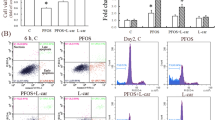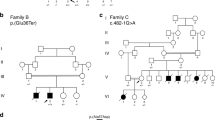Abstract
ABSTRACT: Evidence is emerging that primary systemic carnitine deficiency, a potentially lethal but eminently treatable inborn error of fatty acid oxidation, involves a cellular defect in the uptake of carnitine. We present four unrelated children with primary carnitine-responsive cardiomyopathy, weakness (with or without hypoketotic hypoglycemic encephalopathy), low serum and/or tissue carnitine concentrations, and severe renal carnitine leak. Di-carboxylic acids were absent in the urine of three children who were tested, and all four had a rapid and dramatic improvement in cardiac function, strength, and somatic growth after carnitine therapy. We studied carnitine uptake in cultured skin fibroblasts from all four children and seven of the eight healthy nonconsanguinous parents. [3H]L-car-nitine uptake was evaluated in vitro under linear time kinetics. Substrate concentrations were varied from 0.1 to 1000 μM. Physiologic uptake was determined at carnitine concentrations between 0.1 and 50 μM. Nonspecific uptake was determined at a concentration of 10 mM. The four patients had negligible uptake throughout the physiologic range, implying a marked deficiency in the specific high-affinity, low-concentration, carrier-mediated uptake mechanism. At a concentration of 5 μmol/L, the mean velocity of uptake in the four patients was 2% of control values. Their parents showed intermediate maximal rates of carnitine uptake ranging from 13 to 44% of control Vmax values, but normal Km values, suggesting that the hetero-zygotes had a reduced number of normal functioning carnitine transporters. The observed reduction in Vmax values for the parents supports an autosomal recessive inheritance pattern and may be a more sensitive indicator of heterozygosity than serum carnitine concentrations. We conclude that carnitine uptake studies in cultured skin fibroblasts are important for diagnosis, screening of siblings and heterozygote parents, understanding pathogenesis, and investigating the molecular basis of this disease. Given the frequent history of previously unexplained sibling deaths in these familes, early identification of presymptomatic siblings and oral institution of carnitine prophylaxis may decrease immediate and long-term morbidity and mortality.
Similar content being viewed by others
Log in or create a free account to read this content
Gain free access to this article, as well as selected content from this journal and more on nature.com
or
Author information
Authors and Affiliations
Rights and permissions
About this article
Cite this article
Tein, I., De Vivo, D., Bierman, F. et al. Impaired Skin Fibroblast Carnitine Uptake in Primary Systemic Carnitine Deficiency Manifested by Childhood Carnitine-Responsive Cardiomyopathy. Pediatr Res 28, 247–255 (1990). https://doi.org/10.1203/00006450-199009000-00020
Received:
Accepted:
Issue date:
DOI: https://doi.org/10.1203/00006450-199009000-00020
This article is cited by
-
Exome sequencing identifies primary carnitine deficiency in a family with cardiomyopathy and sudden death
European Journal of Human Genetics (2017)
-
Mitochondrial Fatty Acid Oxidation Disorders Associated with Cardiac Disease
Current Pathobiology Reports (2017)
-
Newborn screening for citrin deficiency and carnitine uptake defect using second-tier molecular tests
BMC Medical Genetics (2013)
-
Intracellular in vitro probe acylcarnitine assay for identifying deficiencies of carnitine transporter and carnitine palmitoyltransferase-1
Analytical and Bioanalytical Chemistry (2013)
-
Pathophysiology of fatty acid oxidation disorders and resultant phenotypic variability
Journal of Inherited Metabolic Disease (2013)



